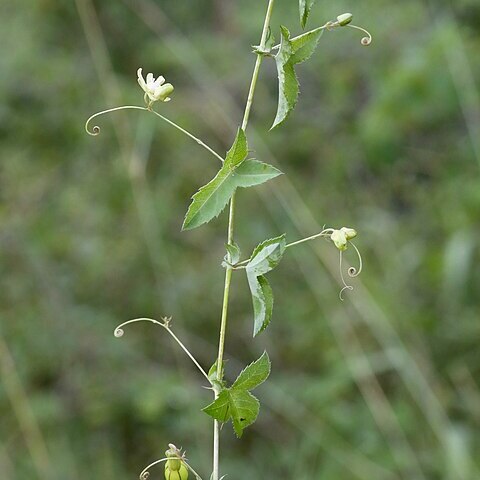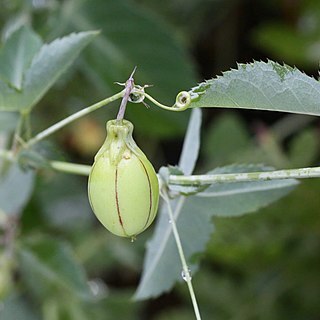Ovary ellipsoid, ovoid or obovoid, sessile or shortly stipitate, 1-locular; ovules several or few, inserted on 3(4) placentas; styles 3–4, free or connate at the base, each with a capitate stigma.
Inflorescence a 1–3-flowered sessile or pedunculate cyme, sometimes with a simple tendril or a mucro-like prolongation in place of the terminal flower; bracteoles small, linear; pedicels slender.
Seeds 1 or few, ellipsoid to reniform, ± compressed, arillate, with a coriaceous, usually rugose, blackish testa; embryo straight with horny endosperm and foliaceous cotyledons.
Stamens 5(6-9), with the free filaments inserted on the inside of the inner corona; anthers basifixed, subsagittate, 2-locular.
Outer corona inserted at the bottom of the hypanthium, consisting of a barrel-shaped tube crowned with a ring of free threads.
Flowers hermaphrodite, small, campanulate, whitish or greenish, stipitate, the stipe indistinctly articulate to the pedicel.
Stipules small, linear; some species provided with false stipules, sometimes foliaceous, developed from supra-axillary buds.
Inner corona shorter than the outer one and represented by a cup-shaped membrane with entire or irregularly lobulate margin.
Annual or perennial erect, prostrate or ascending herbs, rarely shrubs, with or without tendrils.
Petals 0 or 1-2 or (4)5(6), oblong to lanceolate, free, narrower and shorter than the sepals.
Leaves alternate, entire, serrate or dentate or ± deeply lobed, sessile or petiolate.
Sepals 5(6), oblong to lanceolate, imbricate, free.
Hypanthium narrow or shallowly cup-shaped.
Capsule ellipsoid, 3(4)-valved.
Tendrils axillary or absent.

